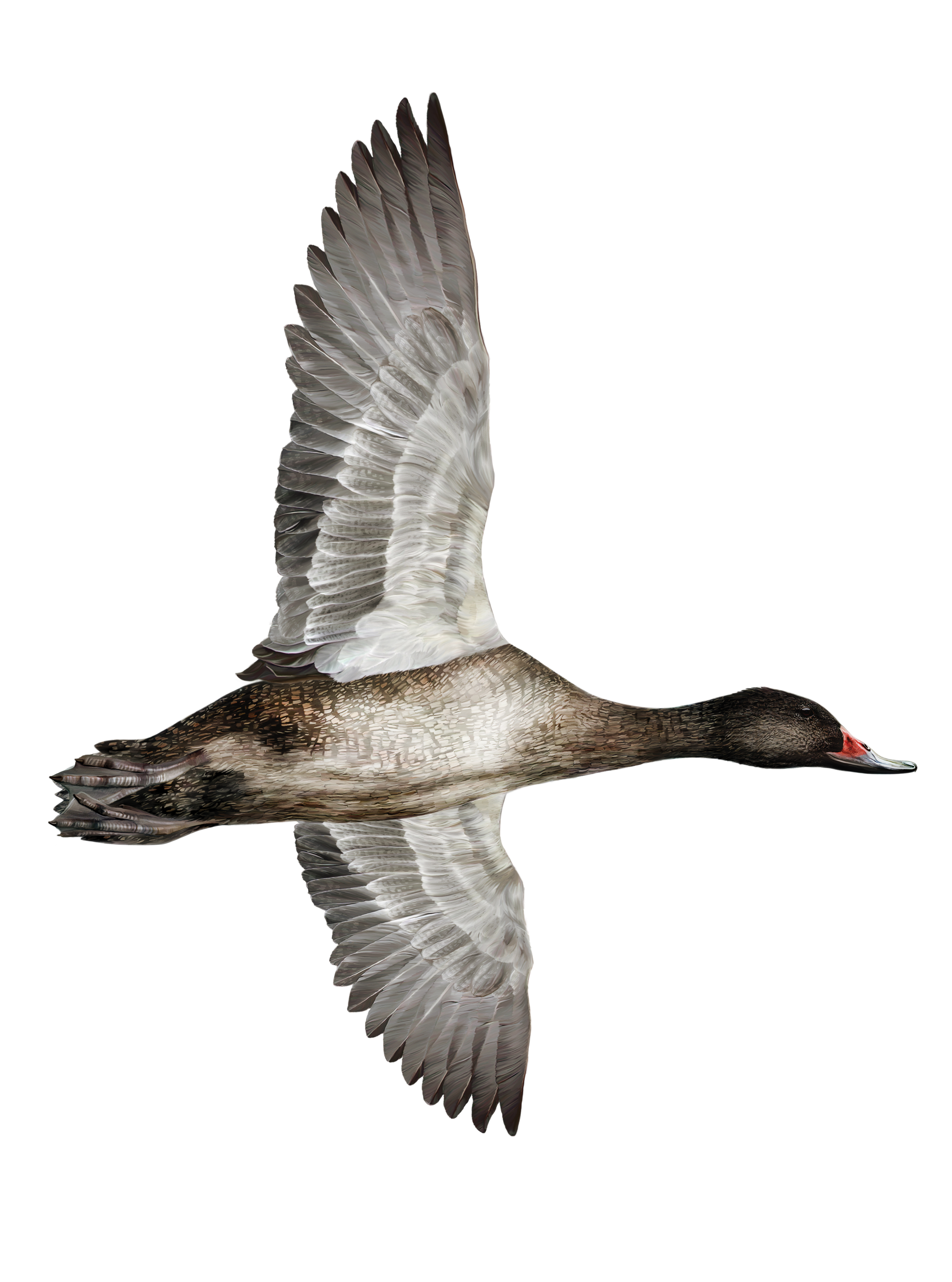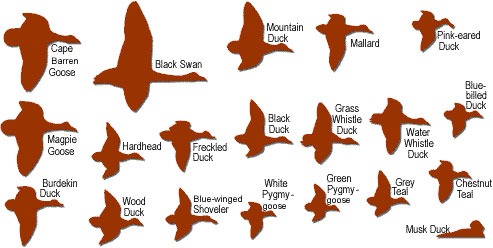Guide to Australian waterfowl
 This information is intended to enable you to identify some important waterfowl (ducks, geese and swans) in Australia.
This information is intended to enable you to identify some important waterfowl (ducks, geese and swans) in Australia.
It is primarily for the hunter, but those interested in identifying waterfowl may also find it useful.
For sound conservation it is essential that hunters should be able to identify game ducks before you shoot. Most waterfowl likely to be encountered while hunting in Australia are illustrated in this resource, however some of them are not legal game birds and are protected by law.
An education video for duck hunters called Duck WISE (Waterfowl Identification, Safety, Effective and Efficient Hunting) has been developed . The video will help all duck hunters to accurately identify game and non-game species and will reduce the risk of the wrong birds being taken in the field.
A game species or not?
To be declared game, species are generally common and occur in large numbers. However, just because a species is considered game in one state does not mean it is game in another.
The status of game species may change from time to time and hunters should always check current regulations, season dates and bag limits. Some game species may be protected from hunting at particular times, such as during drought, or bag limits may be changed in response to population numbers and/or environmental conditions.
How to identify waterfowl
 Prior to applying for Game Licence to hunt game ducks in Victoria hunters need to pass the Waterfowl Identitification Test.
Prior to applying for Game Licence to hunt game ducks in Victoria hunters need to pass the Waterfowl Identitification Test.
All species of Australian waterfowl are readily identifiable, especially within shotgun range.
Most of our written descriptions of game waterfowl and other common waterbirds are accompanied by illustrations. The illustrations are intended to highlight important distinguishing features and allow for positive identification of the bird, both in flight and in the hand. Important distinctive field marks that allow you to differentiate between each of the species is shown in bold type. The distribution of light and dark plumage is particularly important when identifying waterfowl, especially the presence and position of white areas on the wings and the contrast between underwing, neck and body. Some species have distinctive shapes and voices.
Size may also be helpful in distinguishing between species. For example, the Mountain Duck is a large duck, the Black Duck is a medium-size duck and the Grey Teal is a small duck. This image shows the relative sizes of common waterbirds which are likely to be encountered while hunting.
A distribution map is also included with most descriptions and shows the usual range of each of the species. However, most Australian waterfowl are nomadic and may be found as vagrants outside their usual range. It is important to learn how to identify those waterfowl you are most likely to encounter in the region in which you hunt.